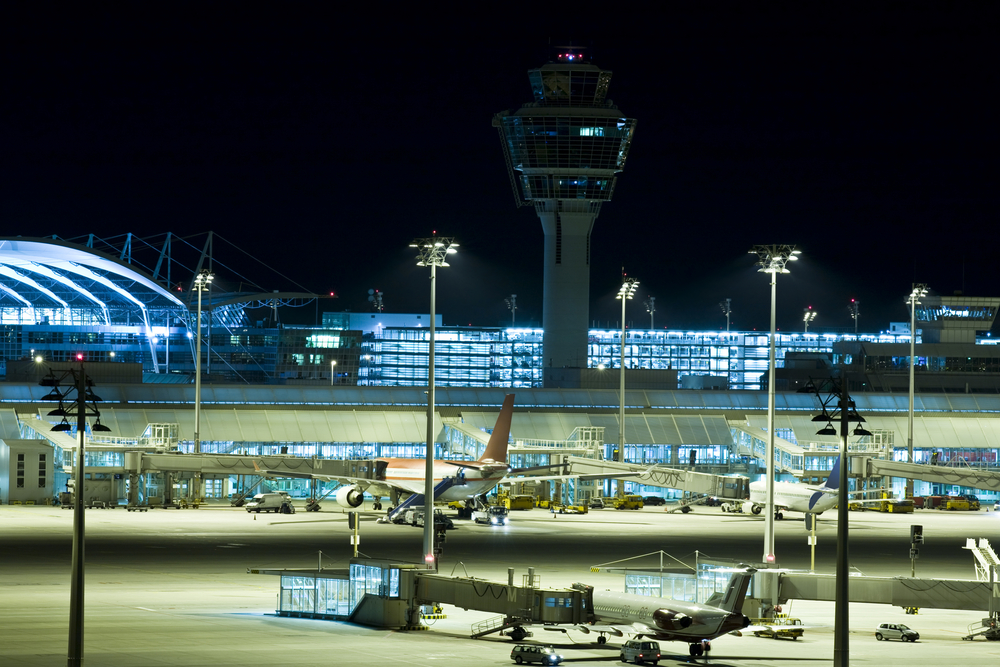
Increasing passenger and air traffic, high fuel prices, operating costs, security and safety requirements, intense scrutiny by civil aviation bodies, retaining and motivating key personnel have made Airports a challenging business with a promising future.
[divider][space height=”8″]
Set benchmarks and goals Define action plans, track progress and achieve business objectives[divider][space height=”8″]
Review performance systematically across all operational departments anytime[divider][space height=”8″]
Provide direction and manage daily operational performance by correlating information, activity and operational data[divider][space height=”8″]
Reward, Motivate and Retain talent and aligning rewards to performance[divider][space height=”8″]
Implement sub-systems to handle gaps in current deployments of Airport Transactional systems[divider][space height=”8″]
Use Business Intelligence and Analytics to make informed decisions[divider][space height=”20″]
Offering
[column col=”1/2″]
Flight Planning Ensure that the permissible Air traffic movements (ATMs) per hour are planned and the utilization of Airport resources such as stands, gates, counters and runways is optimised.
[space height=”5″]
Airport Operations On-Time Performance (OTP) is an important indicator for the Airport, the Airlines, the passengers and aviation authorities. Punctuality benchmarks can be monitored regularly and remedial action taken.
[space height=”5″]
Terminal Operations Key parameters such as Baggage Times are tracked to ensure passenger convenience and optimum utilization of Baggage belts. Sub systems are provided for handling Dignitary Movement, Incident Management , Trolley inventory and maintenance.
[space height=”5″]
Concessionaire Management Concessionaires such as Fuel Suppliers, Cargo Handlers and Catering service providers are tracked on volumes for offering inputs to planners to improve revenue forecasts.
[space height=”5″]
ICT HelpDesk Turn Around Times for helpdesk function are used extensively to ensure adherence to the agreed SLA with the internal and external stakeholders.
[/column]
[column col=”1/2″]
Safety Safety related incidents are captured, classified, updated with root causes to ensure prevention.
[space height=”5″]
Operational Reviews across various departments can be conducted, decisions made, action plans defined and tracked for completion.
[space height=”5″]
Performance Management Enabled through Performance Dossiers, Policy Deployment(PD), Balanced Scorecard (BSC) and Management by Objectives(MBO).
[space height=”5″]
Continuous Improvement Drive improvements through employee suggestions with in-built support for projects based on Lean, Six Sigma and Kaizen.
[space height=”5″]
Rewards Communicate Role Behavior expectation clearly by assigning relevent Key Performance Indicators and align rewards to performance.
[space height=”5″]
Business Intelligence and Analytics Provide rich visualization using dashboards with charting and multi- dimensional analysis tools.
[/column]
[space height=”10″]
Key Benefits
[list type=”arrow2″]
- Achieve Impressive On Time performance benchmarks.
- Ensure improved Baggage Times and optimum utilization of baggage belt resources.
- Provide automated management reporting and analysis. Users now spend more time analyzing reports than creating them.
- Receive Feedback on IbharCPM Dossiers and Dashboards with self-documenting and actionable information.
- Availability of Key Initiatives on a centralised application instead of being scattered in multiple files and formats.
- Conduct Operational Reviews with executive dashboards provide Live Information than pre-prepared documents.
- Provide higher levels of clarity to different departments and users on the expectations from their functions and related benchmarks.
- Provide a single window to multiple operational systems used in planning, airport operations, helpdesk, baggage handling and reconciliation, CUSS terminals and information on concessionaires from airline marketing.
-
[/list]
